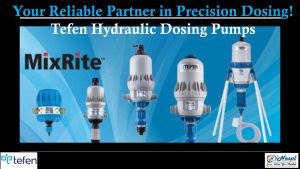Metal quick disconnects are available in brass, aluminum, and stainless steel. Almost all manufacturers focus on the high pressure, hydraulic fluid power markets, adopting similar designs and functionality. These are well suited to the needs and environments of construction, agriculture, and manufacturing. However, these traditional couplings may seem totally inappropriate for liquid cooling systems for computers or blood analyzers in medical labs. It is essential that these systems use couplings that are non-spill and dripless, as well as environmentally friendly.
Here are the few points to be kept in mind which choosing Non-Spill Couplings:
Safety:
When selecting couplings designed to prevent spills, safety & environmental concerns ought to be high on the list of attributes. Non-spill couplings are critical when using toxic, corrosive or environmentally hazardous media.
Medical equipment may not survive the impact of a hydraulic connector being dropped on it, though a lightweight plastic coupling might bounce off just fine.
Effortless usage:
As a matter of priority, it should be addressed. Take into account the cognitive and physical requirements. As a result, the burden is placed on the user. Having easy access to disconnect the couplings without spilling is important.
In addition to offering high security, basic fittings can be slow to repair, may require specialized tools, and can be prone to failure if repaired by untrained users. Quick disconnect couplings with click-together locking mechanisms provide users with tactile and audible feedback that a connection is secure.
Also, a simple and obvious connection mechanism, such as a thumb latch, makes the process simpler for the system operator or repair technician.
With color-coded couplings, it is possible to ensure that lines are non-interchangeable, and connections are mistake-proof. With recent developments in non-spill technologies, force-to-connect has been significantly reduced, resulting in a much more enjoyable user experience.
Spotlessness:
There is an amount of spillage associated with quick disconnect couplings. Traditional coupling designs may require several drops (up to 2 ml per disconnection). Outdoor applications and lines carrying water may not be affected. Non-spill couplings, however, are ideal if the line carries ink in a clean office environment.
Harsh and Reliable:
A coupling’s physical characteristics are influenced by its construction materials. Non-spill applications require strong and durable couplings. Because hydraulic couplings are perceived as more durable, some systems use them. These couplings, however, did not have seals or internal valves designed for low-pressure applications or long-term coupling connections. Select couplings that are specifically designed for low pressure applications and feature robust construction when selecting quick disconnect couplings.
Choice of Materials:
It is important to choose coupling materials based on the environment and application requirements. The use of engineered thermoplastics is more than adequate for many applications. In addition to being lightweight, impact-resistant, and color-coded, this type of coupling is also highly visible. There are, however, some applications that require a metal product because of its strength, durability, or pressure. A variety of metals are available, including brass, stainless steel, and aluminum. Metal and plastic are often combined in coupling assemblies to maximize the benefit of each component.
The compatibility of chemicals:
It is closely related to the material selection criteria that the coupling materials are chemically compatible with the flow media and other components. If you are using a proprietary media, make sure it is compatible with the coupling housings, seals, valves, and tubing. Long-term effects of corrosion, material breakdown, O-ring swell (or shrink) and galvanic corrosion can be significant. In coupling selection, there are many resources that can help establish basic chemical compatibility, and materials experts can provide specialized support if the guides do not provide enough detail.
Flexible closures:
Fluid leaks or drips must not occur after couplings are disconnected and reconnected. Seals must be compatible with the media so as not to swell, shrink, embrittle, or cause other distortions. Occasionally, non-spill couplings feature dual seals to improve sealing capabilities and protect against debris. In the right design, couplings with dual seals are equally reliable as those with single seals.
Lessened leakage places:
Non-spill couplings are commonly available with tapered threads or straight threads. This means you might have to add an adapter to connect with the coupling. However, this connector itself can become the leak point. To avoid that, you might want to consider non-spill couplings with integrated connections so that direct connection can be made.
The Exclusive Distributor of CPC Quick Connects and Disconnects Fittings
NESPL is the best brand from where you can purchase any CPC product according to your needs.
NESPL is the foremost provider of quick disconnect and connect fittings of CPC. We are delegated to presenting our customers with high-quality and outstanding assistance. In addition to providing CPC quick connect and disconnect solutions for the medical and thermal industries, NESPL has vast expertise in providing quick connect and disconnect solutions for various industries. The customer-orientated approach of NESPL is reflected in its high-quality CPC products that it provides.




